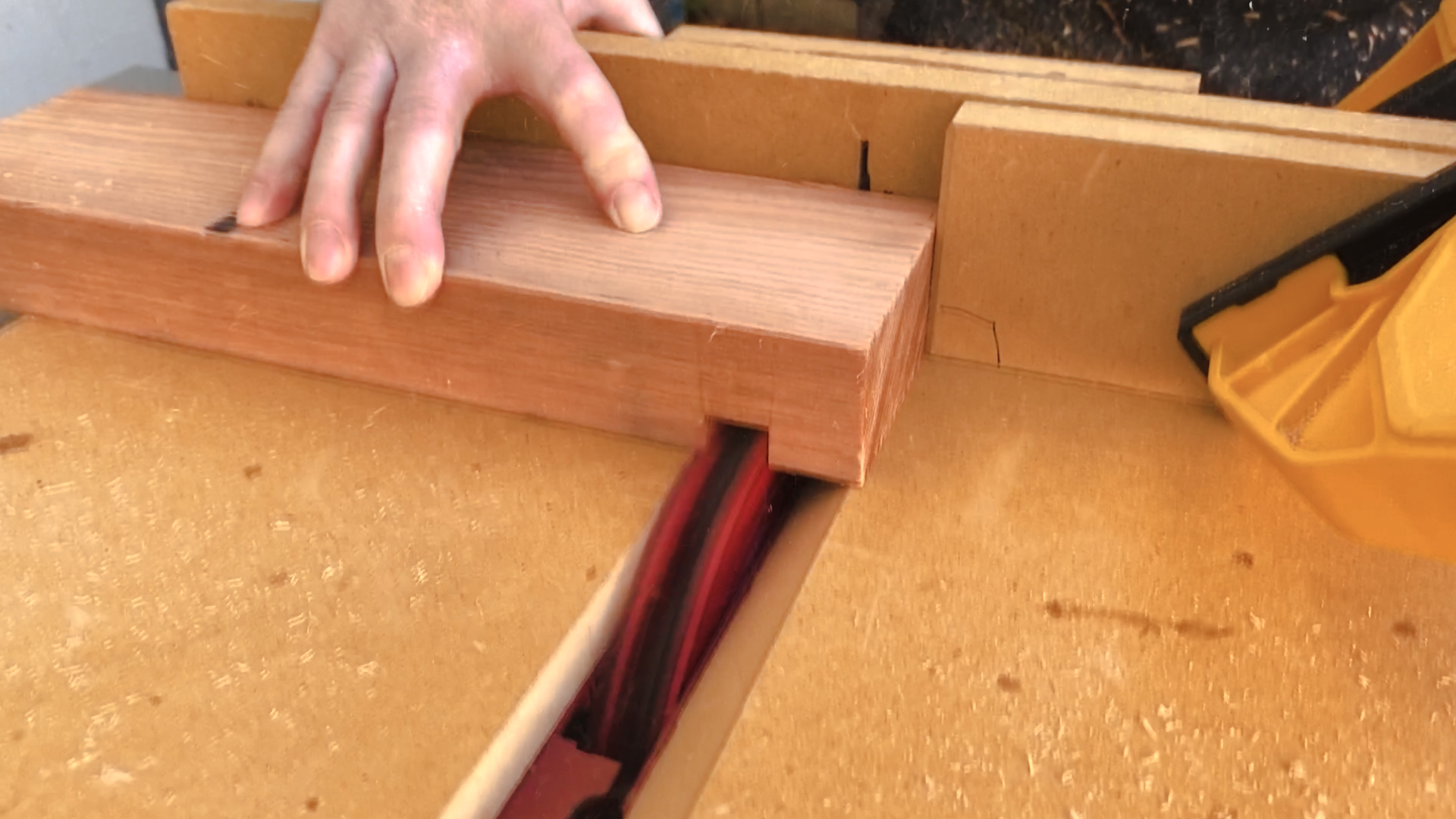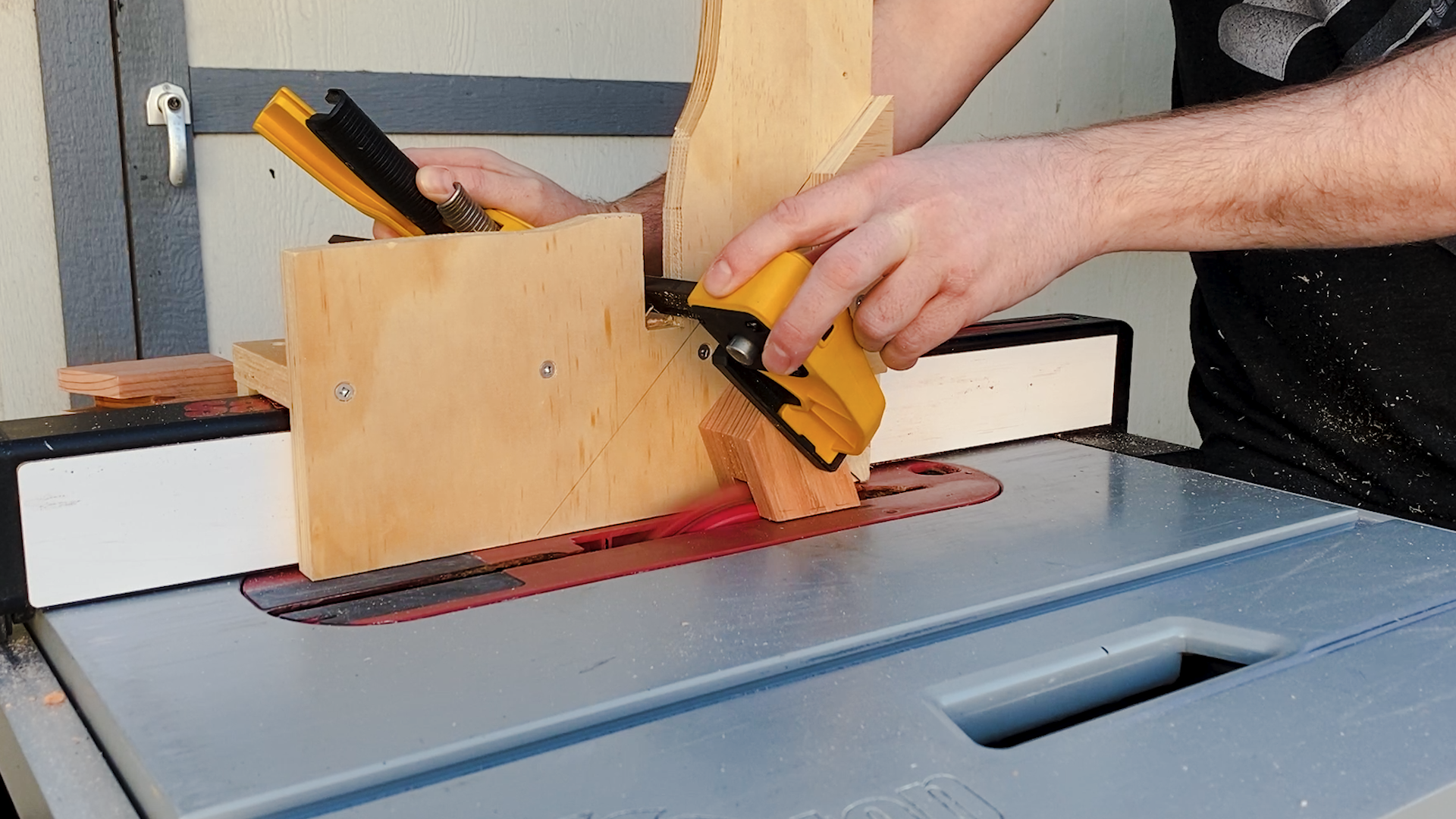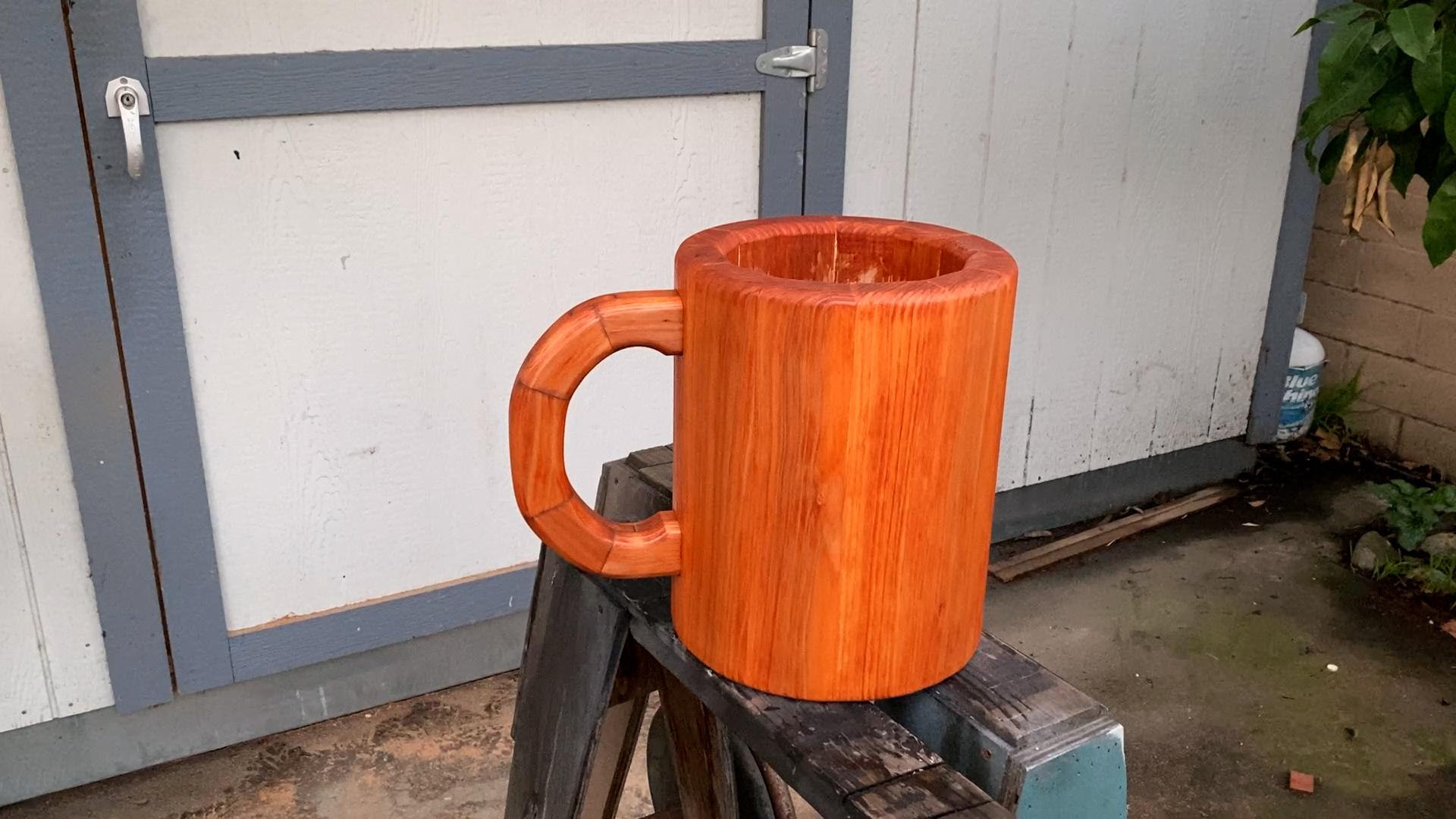DIY Coffee Mug Shaped Planter
by BobsWoodStuff in Workshop > Woodworking
11968 Views, 46 Favorites, 0 Comments
DIY Coffee Mug Shaped Planter


I made this custom Coffee Mug Shaped Planter to grow coffee in. It is 13" tall and about 12" diameter. The mug is very strong, and the handle is securely attached with a mortise and glue and a screw. It is made out of redwood 2x4s and some fence board scraps.
If you like this video or project, consider subscribing to my YouTube channel here:
https://www.youtube.com/channel/UCa9HKA6jRBc3Y-Ihw...
I also have an Instagram here:
http://www.instagram.com/bobswoodstuff
If you want more specific, fully-illustrated step-by-step plans for making this project, they can be purchased on my website here:
https://www.bobswoodstuff.com/downloads/coffee-mug...
Supplies
Supplies:
- two 8-foot redwood 2x4s
- one fence board (any size, you really only need half a fence board)
- two 3" deck screws
- polyurethane glue
Tools:
- table saw
- drill press
- band saw
- router table: roundover bit, slot cutting bit
- sandpaper
- optional: miter saw
- optional: spindle sander, belt or disc sander
* The Supplies and Tools links are Amazon Affiliate links, and I make a percentage on qualifying sales, at no additional expense to the buyer.
Cut the 2x4s Into Sections for Barrel Staves

Using a miter saw, table saw, or circular saw, cut the 2x4s into twelve sections that are 13" long.
The easiest way to do this is on a miter saw with a stop block.
Cut a Dado for the Barrel Bottom

Using a crosscut sled on the table saw, install a dado stack the same width as the thickness your fence boards. Usually this is 3/4" or 5/8".
Set the height of the blade to 1/2" and set up a stop block 1" from the end of the board.
Make this cut on all twelve stave pieces.
Bevel the Edges of the Staves


Tilt the table saw blade to 15° and cut both edges of all the staves.
Cut the Handle From the Remaining 2x4 Pieces

With the remainder of the 2x4, cut a handle piece as shown, using the miter saw or table saw at 22.5°.
Reinforce the Handle Joints With Splines



The end grain connections on the handle will be weak, so they need to be reinforced with splines.
Using a tenon jig on the table saw, cut a 1/2" groove into the connecting ends of the handle pieces.
Then make splines that are 1/2" thick from the rest of the 2x4 material. The grain direction should be parallel with the handle.
Glue the splines in place. I didn't have very good results with Titebond III because my redwood was still wet, but epoxy worked well, and polyurethane glue would also work.
Cut Biscuits Into the Staves

Use a slot cutting bit on a router table or a biscuit joiner to cut biscuit slots into all twelve of the staves. This will help keep all the pieces aligned during assembly.
Do a Dry Fit / Test Assembly

Assemble the whole barrel and make sure it fits with minimal gaps.
If there are some gaps, you can fine-tune the angles with a hand plane.
The polyurethane glue we will be using later will expand to fill gaps.
Cut the Handle Into a Curved Shape

Draw a curve on the handle piece, leaving 1" of straight section on both ends.
Cut to that curve on the bandsaw.
Sand the curve smooth using a spindle sander for the inside of the curve and a belt or disc sander for the outside of the curve.
Round Over All the Handle Edges on the Router Table

Using a large roundover bit (3/4"), round over all the edges of the handle, leaving the ends untouched.
This should be done in two passes, raising the bit after the first pass.
Make a Mortise for the Handle

Place the handle on one of the staves where it will connect, and trace around the ends with a pencil to mark out the two mortises.
Then drill out the corners on the drill press with a 3/4" forstner bit and the depth stop set for a 7/8" deep hole.
After drilling out the corners, chisel out the rest of the waster or use a palm router to route out the inside (see video).
Cut Out the Pieces for the Bottom



Place the barrel on a piece of cardboard.
Trace the inside of the barrel, and then expand that octagon by 3/8" all the way around. The dado should be 1/2" deep, so this will allow the bottom to fit with room for expansion.
Cut out that cardboard template and trace it onto the fence board scraps.
Cut out that shape with a jigsaw or bandsaw.
Glue the Barrel Together

With the handle detached, reassemble the barrel into two halves, applying polyurethane glue between each of the staves.
Put the bottom pieces into the dado in the barrel halves, and then connect the two halves together. DO NOT put glue in the dado that the bottom piece occupies. It should float freely in the bottom dado.
Wrap the whole barrel in wax paper or parchment paper, and pull it tight together using ratchet straps. The paper will prevent the straps from being glued.
Hand Plane the Outside of the Barrel to a Round Shape


Using a hand plane or a belt sander (preferably a hand plane, since it is more accurate), plane down the high spots of the barrel where the glue lines are.
This will create lots of new high spots, so plane those down as well.
After doing this, the barrel will be close to round. Plane or sand down any remaining high spots to get it round.
Round the Top of the Mug and Sand the Whole Thing


Use a 3/4" bit on the router table to round over the inside and outside of the top lip of the mug. This is done with the mug upside down on the router table. Make sure to use two passes, raising the bit between passes.
Then sand the whole barrel up to 220 grit.
Attach the Handle

Pre-drill a hole for a screw through the mortise area and into the handle.
Put some polyurethane glue into the handle mortises, and attach the handle.
Fasten it in place with one 3" deck screw going into each end of the handle. You will need to use an angled bit driver or ratchet to get to the lower screw.
Admire the Mug!


It is mostly done at this point and should look like a giant (and heavy) coffee mug.
Apply your desired finish to the mug. Redwood is already rot resistant, but I used Thompson's Timber Oil in the redwood color. This has some redwood pigment and UV protection, which will help my planter look nice for longer.
Plant Your Plant!


Before you plant: drill four holes into the bottom for drainage.
I planted a coffee plant in mine to go with the theme, but plant whatever you like in it.
Thanks for looking!
Make sure to check out my YouTube channel.